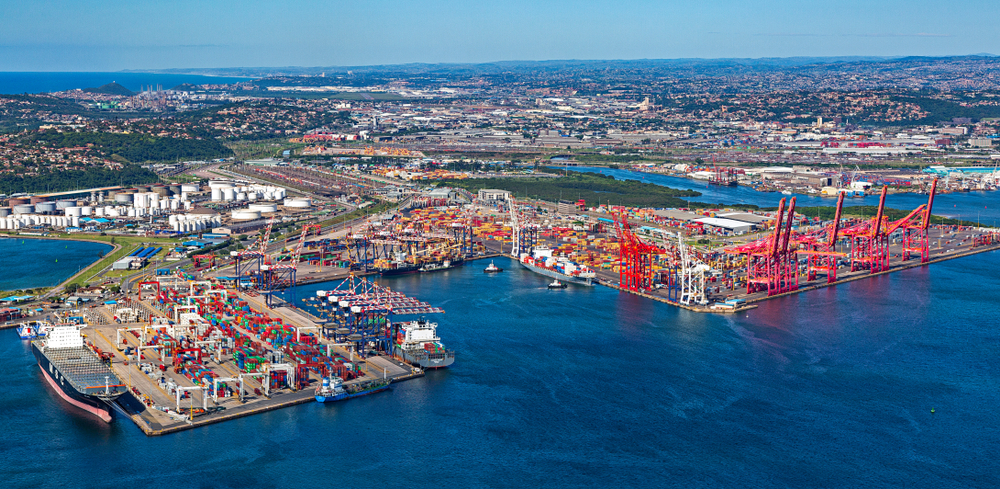 The prevailing backlog of ships at anchorage outside South Africa’s largest container terminal in Durban is currently forecast to be cleared only by the end of February next year, amid persistent equipment shortages and insufficient maintenance, writes Terence Creamer in this article, republished courtesy of Creamer Media’s Engineering News.
The prevailing backlog of ships at anchorage outside South Africa’s largest container terminal in Durban is currently forecast to be cleared only by the end of February next year, amid persistent equipment shortages and insufficient maintenance, writes Terence Creamer in this article, republished courtesy of Creamer Media’s Engineering News.
However, Transnet Port Terminals (TPT) reports that it is working on various initiatives to clear the congestion at Durban Container Terminals (DCT) Pier 2 sooner, including by redirecting vessels to adjacent terminals.
DCT managing executive Earle Peters reported last month that the number of vessels waiting outside DCT Pier 2, the country’s busiest container terminal, rose to 20 during October, when inclement weather led to the loss of 159 operating hours.
This resulted in average berthing delays of 18 days and saw the daily container-handling tempo fall from 3 300 to only 2 500.
Initiatives were underway to ramp up the daily tempo to 4 000 containers, but by November 20, the number of vessels waiting at anchorage still stood at 16 and the figure was forecast to remain elevated for the rest of the year.
In fact, Peters warned that it was possible that the backlog could take 15 weeks to clear, implying a clearance date of only February 29, 2024.
Various productivity initiatives were being pursued, and there was also a plan to redirect vessels to other terminals in Durban, including Pier 1, where the backlog of ships at anchorage is starting to ease, and the multi-purpose terminal.
Nevertheless, Transnet chairperson, Andile Sangqu, warned that the problem was complex and would require various initiatives and significant investment to overcome.
“We need to caution that this is going to take time, and nothing is going to happen overnight,” Sangqu said during a virtual briefing on the status of DCT.
He reiterated that the maintenance backlog across Transnet’s port and rail networks stood at R50-billion and stressed that there was also a significant shortage of key port equipment, which had procurement lead times of between 12 and 18 months.
At DCT, TPT aimed to procure rubber-tyred gantries, straddle carriers and ship-to-shore cranes for delivery between April 2023 and April 2025.
The port infrastructure also needed to be expanded and modernised and Sangqu reported that the group intended expediting various concessioning processes to integrate private investment, skills, technology and processes.
He reiterated that the group had significant financial constraints, including debt-servicing obligations of R13-billion a year.
“If we can optimise the way in which we fund our infrastructure, it could free up a lot of cash that can then be diverted to help us fast-track the funding of the maintenance backlog.”



























